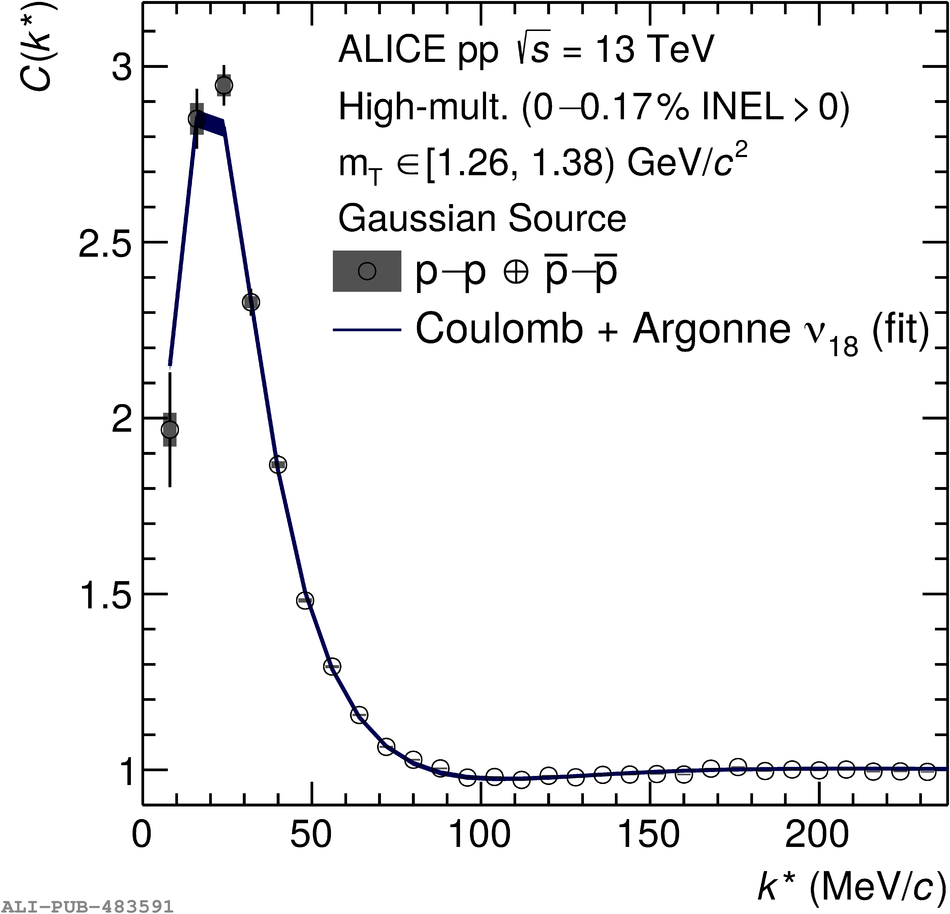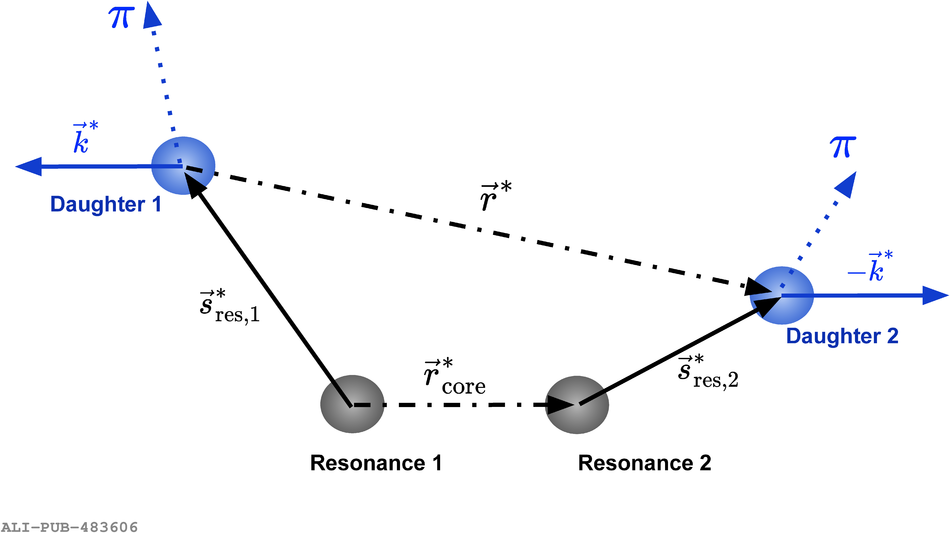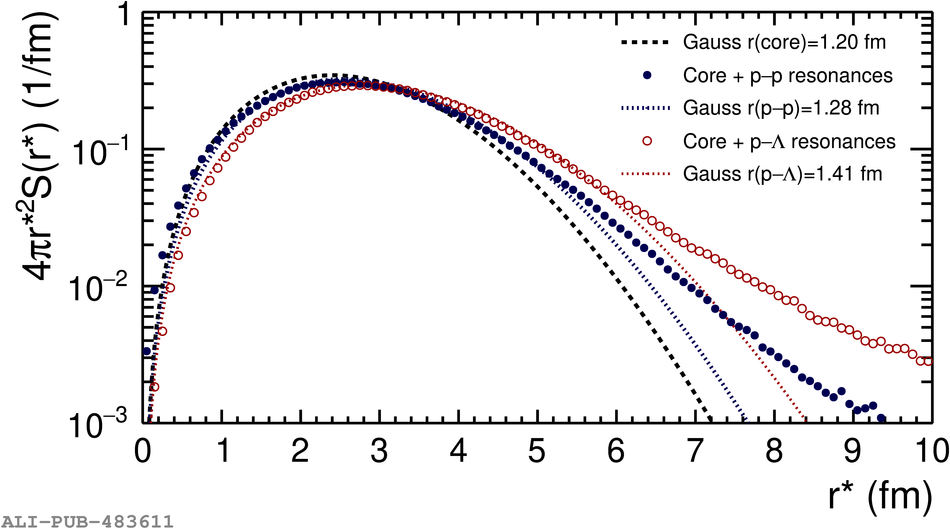We report on the measurement of the size of the particle-emitting source from two-baryon correlations with ALICE in high-multiplicity pp collisions at $\sqrt{s}$ = 13 TeV. The source radius is studied with low relative momentum p-p, $\bar{\rm{p}}$-$\bar{\rm{p}}$, p-$\Lambda$ and $\bar{\rm{p}}$-$\bar{\Lambda}$ pairs as a function of the pair transverse mass $m_{\rm{T}}$ considering for the first time in a quantitative way the effect of strong resonance decays. After correcting for this effect, the radii extracted for pairs of different particle species agree. This indicates that protons, antiprotons, $\Lambda$, and $\bar{\Lambda}$ originate from the same source. Within the measured $m_{\rm{T}}$ range (1.1-2.2) GeV/$c^{2}$ the invariant radius of this common source varies between 0.85 and 1.3 fm. These results provide a precise reference for studies of the strong hadron-hadron interactions and for the investigation of collective properties in small colliding systems.
Phys. Lett. B 811 (2020) 135849; Phys. Lett. B 861 (2025) 139233
HEP Data
e-Print: arXiv:2004.08018 | PDF | inSPIRE
CERN-EP-2020-053
Figure Group







